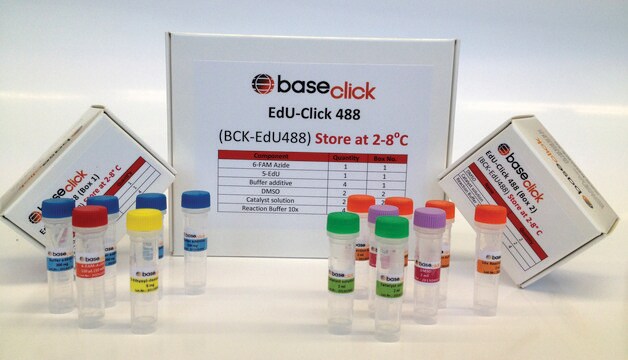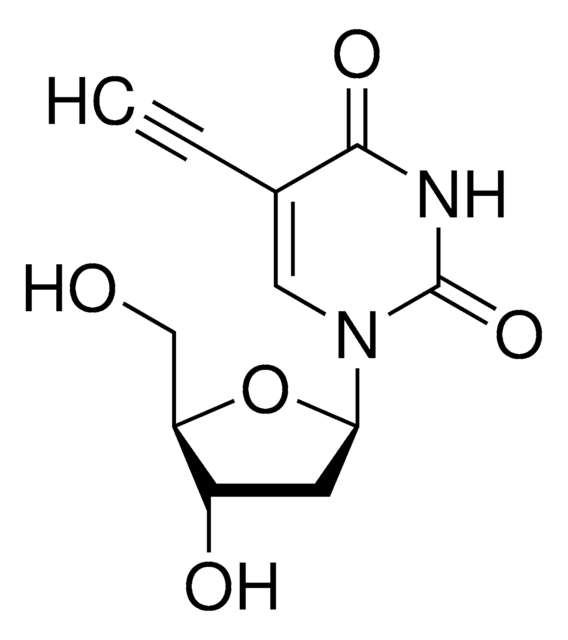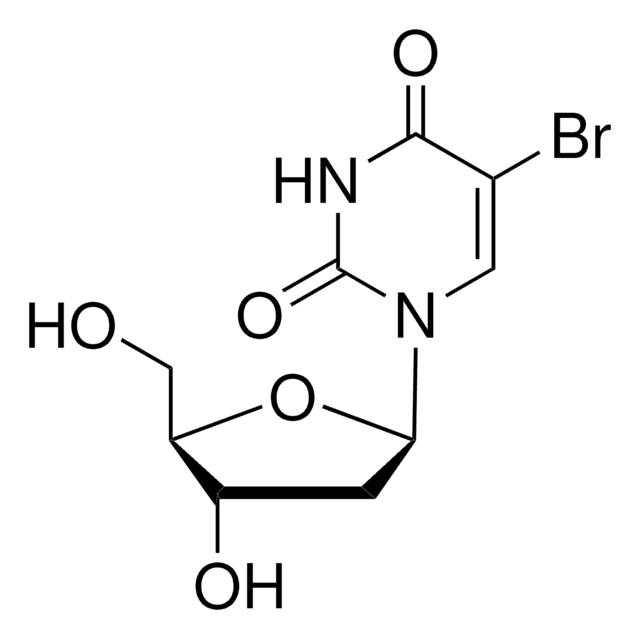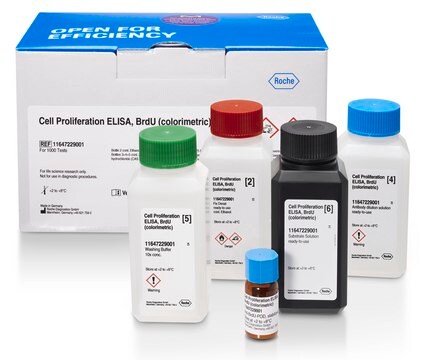Wszystkie zdjęcia(1)
Kluczowe dokumenty
BCK-EDU594
EdU-Click 594
sufficient for 100 assays
Zaloguj sięWyświetlanie cen organizacyjnych i kontraktowych
About This Item
Kod UNSPSC:
12161503
NACRES:
NA.22
Polecane produkty
fluorescencja
λex 584 nm; λem 603 nm
Warunki transportu
wet ice
temp. przechowywania
2-8°C
Opis ogólny
EdU (5-ethynyl-2′-deoxyuridine) is a nucleoside analog to thymidine and is incorporated into DNA during active DNA synthesis. In contrast to BrdU assays, the EdU-Click Assays are not antibody based and therefore do not require DNA denaturation for detection of the incorporated nucleoside. Instead, the Baseclick EdU-Click Assays utilize click chemistry for detection in a variety of dye fluorescent readouts. Furthermore, the streamlined detection protocol reduces both the total number of steps and significantly decreases the total amount of time. The simple click chemistry detection procedure is complete within 30 minutes and is compatible with multiplexing for content and context-rich results.
Zastosowanie
Imaging
Ta strona może zawierać tekst przetłumaczony maszynowo.
Hasło ostrzegawcze
Danger
Zwroty wskazujące rodzaj zagrożenia
Zwroty wskazujące środki ostrożności
Klasyfikacja zagrożeń
Aquatic Chronic 3 - Eye Irrit. 2 - Muta. 1B - Repr. 2
Kod klasy składowania
6.1C - Combustible acute toxic Cat.3 / toxic compounds or compounds which causing chronic effects
Wybierz jedną z najnowszych wersji:
Certyfikaty analizy (CoA)
Lot/Batch Number
It looks like we've run into a problem, but you can still download Certificates of Analysis from our Dokumenty section.
Proszę o kontakt, jeśli potrzebna jest pomoc Obsługa Klienta
Masz już ten produkt?
Dokumenty związane z niedawno zakupionymi produktami zostały zamieszczone w Bibliotece dokumentów.
Klienci oglądali również te produkty
Yongmao Yu et al.
Journal of immunological methods, 350(1-2), 29-35 (2009-08-04)
T lymphocyte proliferations can be measured by [(3)H]thymidine incorporation. However, many labs avoid this technique because of the need to use radioactive substrates. In addition, [(3)H]thymidine incorporation method does not permit simultaneous characterization of the proliferating cells. We developed the
Fatemah Chehrehasa et al.
Journal of neuroscience methods, 177(1), 122-130 (2008-11-11)
Labelling and identifying proliferating cells is central to understanding neurogenesis and neural lineages in vivo and in vitro. We present here a novel thymidine analogue, ethynyl deoxyuridine (EdU) for labelling dividing cells, detected with a fluorescent azide which forms a
Nasz zespół naukowców ma doświadczenie we wszystkich obszarach badań, w tym w naukach przyrodniczych, materiałoznawstwie, syntezie chemicznej, chromatografii, analityce i wielu innych dziedzinach.
Skontaktuj się z zespołem ds. pomocy technicznej







